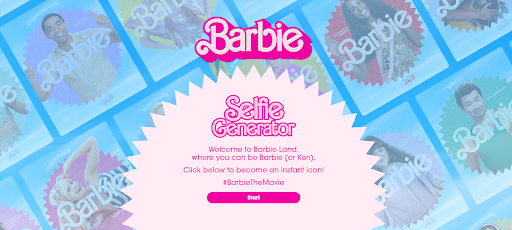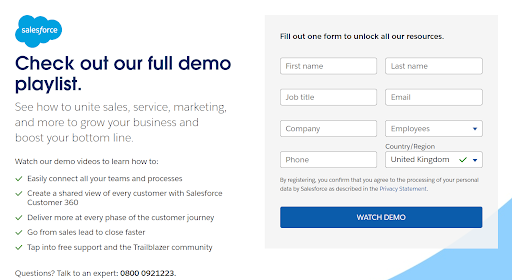Did you know that 73% of B2B marketers and 70% of B2C marketers use content marketing as part of their marketing strategy? And 70% of marketers say they actively invest in inbound marketing, with 60% determining inbound marketing as "very important" or "extremely important" for their business.
As a social media strategist and digital marketing professional with a decade of experience, I’ve seen firsthand the benefits content marketing and inbound marketing can have on business growth, from driving brand awareness to generating leads.
I’ve had the opportunity to work with a many brands—ranging from small businesses to large corporations in various industries—and I can tell you that establishing a content marketing strategy and utilizing inbound marketing were effective marketing approaches across the board. While the two marketing strategies are distinct, they can work together to create magic for businesses.
In today's digital-first world, both content marketing and inbound marketing play crucial roles in meeting business and marketing goals. Whether you’re looking to drive audience engagement or generate sales, you can implement content strategies and inbound marketing to strengthen your brand’s online presence.
Now you might be asking, what exactly is the difference between content marketing and inbound marketing? We’ll get into specifics in this article, exploring the methodology, and the differences, while doing a deep dive into the benefits of content marketing and inbound marketing so you get clarity on how to implement them together to get the best results.
What Is Content Marketing?
Content marketing focuses on creating and sharing valuable content that attracts and retains your target audience. The idea is to develop and distribute relevant content across various channels that engage audiences and build brand authority to nurture leads.
This approach focuses on addressing customer pain points, building trust and authority within your brand's industry, and providing helpful information. As you consistently publish high-quality marketing content, your brand can enhance its reputation and position itself as an industry leader, ultimately contributing to trust and loyalty among your target audience.
The word “content” can seem quite generic. However, there is a wide range of formats to consider, including blog posts, infographics, whitepapers, and eBooks. Content isn’t limited to text either; it can be visual, such as video, or audible, such as podcasts. Consider developing blog posts that are informative but offer genuine insights and helpful tips. Create video content that demonstrates your products or features customer testimonials. Write whitepapers that provide in-depth guidance and research findings pertaining to your industry.
When your brand has a variety of content, you can carry your audiences through the different stages of the sales funnel, from awareness to consideration, and conversion. Understanding the buyer's journey and creating marketing content that aligns with each phase allows you to attract potential customers, educate them about your products or services, and ultimately convert them into loyal and ideal customers.
The key, however, is to create compelling stories and content that truly resonates with the target audience, so gaining clarity on their buyer personas, determining their wants, needs and pain points is crucial. By tailoring your content to the specific needs and interests of your audience at each stage, you can guide them through the buying process and build a strong relationship with them along the way.
Let's look at an excellent example of how content marketing can help build buzz and attract attention for a sustained period of time. By now, the internet knows that the Barbie movie is being released at the end of July. That’s all thanks to their marketing campaigns within social media, experiential marketing, and brand partnerships. If we look at their content marketing tactics, they strategically released a teaser trailer a year prior, and along with the full trailer, they launched a series of character posters and an AI-powered selfie generator to invite audiences to be part of the Barbie universe.

The Barbie cast has also been involved in sharing behind-the-scenes content and conducting Barbie-themed interviews, utilizing popular publications to attract specific audiences, from taking you inside the Barbie dream house via Architectural Digest to playing with puppies via Buzzfeed.
What Is Inbound Marketing?
Inbound marketing involves creating compelling content, optimizing it for search engines, and using social media to attract potential customers to a company's website or online platforms. It is a customer-centric approach to marketing that focuses on reaching and engaging potential customers through valuable content and experiences, involving four main stages:
- Attract
- Convert
- Close
- Delight
In the initial attract stage, the goal is to get your target audience’s attention by creating and promoting content that aligns with their interests and needs. This can be achieved through blog posts, social media content, and optimized web content with solid search engine optimization (SEO) keywords.
Once you have attracted your potential customers, you can then work on converting them by capturing their information, or in other words, turning them into leads. Gaining customer information, including emails and phone numbers, allows you to nurture the audience down the sales funnel, turning them into buying customers once you enter the close phase.
For converting audiences, you can create downloadable content, such as eBooks, whitepapers or specific landing pages. In exchange for the content, they’ll need to provide contact information. Once you have their contact information, you can further nurture the connection through email marketing, providing targeted information and offers.
In the closing stage, you’ll be able to turn interested customers into buying customers and typically marketing automation and customer relationship management are common tactics to use during the phase, turning audiences into loyal customers.
Lastly, the delight stage is focused on keeping customer loyalty, using tactics such as social media engagement and customer loyalty or advocacy programs to retain them as customers.
Salesforce is a prime example of a B2B brand that has a comprehensive inbound strategy. Their approach focuses on providing valuable content and resources to establish itself as a thought leader the CRM industry. While they produce a wide range of content, they also use SEO, social media marketing, and email marketing to drive traffic and capture leads.

Lastly, Salesforce uses automation tools to streamline their lead generation and nurturing processes, leveraging personalized landing pages and forms to capture customer data.
As you can see from this example, there are many tools available to draw your customers in. If you are not sure where to start, The CMO has curated a list of the 12 best inbound marketing tools that you can read through.
Differentiating Content Marketing vs Inbound Marketing
There are a few key differentiating factors involving scope, goals, and execution. In terms of scope, content marketing focuses on creating and distributing valuable content to attract, engage, and educate your target audience. In contrast, inbound marketing is a broader approach that includes content marketing but also other tactics like SEO, social media marketing, email marketing, and automation. Inbound marketing also aims to attract leads, convert them into customers, and build long-term relationships.
The primary goal of content marketing is to build brand awareness, establish thought leadership, and engage audiences, while inbound marketing has broader goals that include personalized experiences to generate qualified leads, nurturing them throughout the buyer's journey, and converting them into loyal customers.
There are similarities and overlaps, since both involve content creation and rely on valuable content that serves the intended target audiences. Integrate them and you'll build long-term successful relationships with your customers.
Benefits Of Content Marketing
Content marketing allows you to showcase your brand’s expertise and knowledge within your industry, establishing thought leadership and credibility. As you create valuable content that educates and engages, you can foster a better connection with your audience and expand your reach. If your audience enjoys your content, they are more likely to share it, which drives exposure.
Content marketing also plays a crucial role in driving organic traffic to a company's website. By optimizing content for search engines and promoting it across various channels, businesses can increase their visibility in search results and attract a larger audience. A boost in traffic can lead to more leads, conversions, and revenue.
Overall, content marketing offers numerous benefits, from establishing thought leadership and credibility to driving organic traffic, building trust, and showcasing a distinct value proposition. It is a valuable strategy if you’re looking to create long-lasting relationships with your target audience and generate meaningful results.
Advantages Of Inbound Marketing
Inbound marketing promotes marketing and sales alignment. By using targeted and personalized content, based on customer information, businesses can attract and qualify leads more effectively. The insights gained from inbound marketing efforts can be shared with sales teams, enabling them to have more meaningful conversations with potential customers, increasing the chances of conversion.
Inbound marketing also enables businesses to deliver personalized experiences to their audience. By analyzing data and understanding customer needs and preferences, you can use social media management platforms to create tailored content and offers that enhance customer satisfaction. This will help to increase the likelihood of repeat business, building customer advocacy and loyalty.
Another advantage of inbound marketing is that it allows you to track and measure return on investment (ROI) using analytics, data-driven insights, and optimization. You can monitor the performance of inbound campaigns, track lead generation and conversion rates, and make data-backed decisions to optimize future marketing strategies.
Integrating Content Marketing and Inbound Marketing in 4 Steps
Use content marketing as a cornerstone of inbound marketing strategies
Content marketing should be at the core of your inbound marketing strategy. Remember to create and distribute valuable and relevant content that resonates with your target audience. This type of content will attract prospects, engage them, and ultimately convert them into customers. To help you create high-quality content, The CMO has put together a list of the 12 best content marketing software that you will find incredibly helpful if you struggle with creating content.
Develop a content calendar aligned with inbound marketing objectives
To align your content marketing with inbound marketing objectives, you need to develop a content calendar, which will keep you organized and streamlined. This calendar should outline the topics, formats, distribution channels and call-to-action.
Remember that your content should address each stage of the buyer's journey, from awareness to consideration and conversion. You can use a content marketing solution or a content workflow software create this and circulate with all the relevant stakeholders.
Implement lead nurturing workflows to guide prospects through the sales funnel
Lead nurturing workflows are essential in guiding prospects through the sales funnel. To implement this, create automated email sequences that will deliver targeted and personalized content based on the customer’s stage in the buying process. You can segment your leads based on their interests, behavior, and demographics to provide them with the most relevant information at each stage of the funnel.
Measure and optimize the combined efforts for continuous improvement
To maximize results and ensure continuous improvement, it's crucial to measure and analyze the performance of your combined content marketing and holistic inbound marketing efforts. Set key performance indicators (KPIs) that align with your business goals and objectives, and use analytics tools or your preferred content marketing platform to track progress. Look out for insightful metrics such as website traffic, conversions, lead engagement, and customer retention. Based on the insights gained, you can later optimize your strategies and adjust your content calendar accordingly.
Gaining Inspiration For Your Content Marketing And Inbound Marketing Strategies
We can learn a lot from industry players within the B2C and B2B markets who use content marketing and inbound marketing effectively. From Coca-Cola to HubSpot, and Canva to Later, businesses of all sizes are using this approach to attract and retain customers.
I’d love to hear from you—which brands have captured your attention recently? What was the valuable piece of content that grabbed your interest? Leave a comment below to share the best case studies of 2023 so far. Ad if you're looking to learn how to create content that resonates, here's a great list of the best content marketing courses available.
If you're hungry for more marketing knowledge and want to dive deeper into related topics, subscribe to The CMO’s newsletter to get actionable tips and expert advice straight from the pros.


